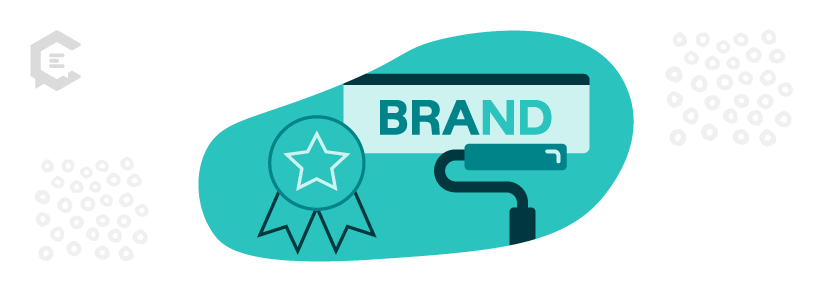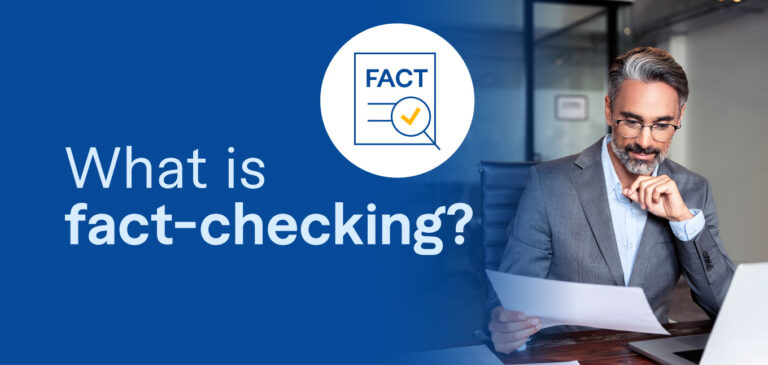A brand is more than just a logo or tagline. It’s who you are and what people feel about you.
These days, it seems like everyone has a brand. With more and more consumers turning to online resources to make their next buying decision, how do you stand out?
This guide will walk you through how to build your brand holistically through content marketing. We’ll cover how to create brand guidelines, build your authority, and increase your relevance. Then, we’ll take you through a step-by-step process to building a digital presence.
Building Your Brand

Establishing your brand guidelines
All great brands start the same way — a clear set of guidelines. These standards define how your brand looks, feels, and communicates across all its content.
When you’re creating your guidelines, you want to focus on three primary pillars:
- Visual identity: Your visual identity includes your logo design, color scheme, font type, and design elements. It’s often your first impression.
- Voice and tone: Your brand voice will stay consistent across all your content. Are you educational and authoritative or friendly and conversational? Tone is a bit more flexible. It can vary between formal or casual based on the context.
- Messaging: Your messaging starts with a mission statement that captures your brand’s purpose. Then, it expands to the core values that guide your brand forward.
All in all, brand guidelines are a framework. They offer a structure and ensure your brand remains consistent across all your content channels.
Building your brand authority
It takes some time to earn your audience’s trust. You have to commit to taking the time and energy to build an audience through your content.
With branding, it’s all about creating a connection with your target audience. Every piece of content is an opportunity to engage customers, reinforce your brand’s identity, or establish your authority.
Here are the best strategies that will build your brand authority in no time:
- Quality over quantity: Regularly publish high-level, well-researched content that provides insights into your audience’s needs and pain points.
- Thought leadership: Nothing builds authority faster than thought leadership content. Don’t just echo what everyone else is saying. What’s a unique perspective that your brand brings to the table? Use that to set yourself apart.
- Guest posting: Another great way to increase your brand’s visibility is to collaborate with other reputable companies in your industry. A guest post helps you tap into a new audience base and build backlinks to your site that increase SEO.
Maintaining relevance
To stay relevant, you need to keep your content malleable. Always continuously evolve and align your content with your audience’s changing needs and preferences.
- Stay up-to-date: Keep an eye on your industry’s evolving trends and developments. Attend webinars and workshops if you can. Monitor the top industry websites for any news or reports. Also, revamp your old content with fresh data and insights.
- Use feedback: Audiences are vocal these days. They’ll tell you what they want. Make your audience feel valued and heard. Take their feedback and refine your services and content strategy to adapt. And use analytics tools to monitor your audience’s behavior and preferences.
- Social media: Social media is where you can directly converse with your target audience and develop your brand’s footprint. Engage with your followers and answer their questions. It shows that your brand values its community. And don’t be afraid to engage with trending hashtags or partner with influencers.
Building Your Brand’s Digital Presence
Alright, you now know how to build your brand. It’s time to take that knowledge to the digital world. That starts with establishing a strong digital presence.
What is a digital presence?
Your digital presence is what your company looks like online.
It represents the entire portfolio of digital branded platforms and assets, including websites, social channels, ads, search, and any other marketing content that lives online versus on a print or brick-and-mortar platform.
Digital presence is more than just being online. It’s also how your customers or potential customers perceive you.
What are the different types of digital presence?
As we mentioned, your digital presence comprises all the places on a buyer’s journey where they may encounter your brand online. That includes what you create (blog posts and tweets) and what others create about you (online newspaper articles or customer reviews.)
It includes:
- Your website, including blog posts, articles, customer support assets, product descriptions
- Social channels, including your and others on Twitter, Facebook, Instagram, TikTok, LinkedIn, and others
- Earned or unearned media, such as branded online guest posts, newspaper mentions, or press releases
- Email marketing, including drip sequences and marketing newsletters
- Search, including how you show up in organic Google results and those you pay for (PPC)
- Reviews on commerce sites, such as Amazon customer reviews or Goodreads
Your digital presence may even include conversations about you on community forums, chat sites, or anywhere someone may get an impression of you from the internet.
Why is it important to have a digital presence?
You can’t do much about what someone says about your business online. But you can control the presence you create yourself. How do you do that? By creating robust, targeted, and engaging content that meets people where they are while letting them know what you are all about.
The benefits of doing this are many:
- Helps you get discovered or teaches an audience about the need you seek to solve
- Legitimizes your business and helps customers see you are a real company
- Helps you sell at every moment across multiple channels
- Provides data you can use to learn about your audience and provide better customer service or more valuable products and services
- Costs less than other advertising forms, such as print or maintaining an in-person presence
- Boosts your SEO, something that’s very important if you want your customer to find you through search
Last, it lets you educate your customer at multiple touchpoints in the buyer journey. We know that customers don’t usually buy upon first hearing of a company. They need several prompts and chances to research before they feel comfortable.
Either way, having a wide-reaching online presence ensures they find you when they’re ready to take that next step.
How to Build a Digital Presence
Creating an online footprint isn’t a one-and-done event. You’ll need to commit to starting with the end in mind and continually refining your efforts for the changing landscape of online media.
Make sure you are open to learning and can dedicate time and budget to making your digital presence the best possible. You’ll also want to follow these tips.
Fix mistakes ASAP
When was the last time you looked at your Google Business Profile listing? Is it outdated or full of errors?
Even something as small as having a wrong menu offering or outdated business hours can cause you to lose goodwill. Go through your digital assets and ensure they are factual and easy to navigate.
Focus on what you do best
There are many places your digital presence can eventually reach. But it’s best to start small for those new to creating a digital footprint. One of the worst things you can do is attempt to reach out via numerous digital channels and give the impression you’re not very good at any of them.
Focus on one or two social channels plus your website at first. Give them your full attention and resources to make them the highest quality possible.
Set yourself apart
Once you’ve committed to some core aspects of your online presence, consider how you are different from your competitors.
Is it the product? Do you have a unique customer service approach? Perhaps you really have a way with words. Whatever it is, use the online space to define your company so there’s no mistake that it’s you. This will be especially helpful as your industry becomes more crowded.
In fact, after some time, your customers should recognize your content in their social feeds or through search without having to look at your name.
Use visuals
People love photos and videos. (Just look at how popular TikTok and Instagram Reelz are now!) Visual assets can stand in for clever copy and do the heavy lifting of defining your brand in that stand-out way we mentioned before.
You can also use infographics and videos to educate, answer product questions, share customer testimonials, and advertise much more cheaply than on television.
Visual content is also more readily shared, so use it anytime you need a signal boost on a product launch or update. Optimizing visual content boosts SEO, as well.
Don’t be afraid to ask for help
Finally, the online space is fast-moving, constantly changing, and a more significant part of your influence all the time. While there’s likely some content you can handle on your own, don’t let time or talent limit you from creating the digital assets you know can help convert.
If you struggle to get your marketing team to prioritize things or want some direction, consider outsourcing to a content agency that’s well-versed in such matters.
Ready to Build Your Brand?
Building your brand requires dedication and commitment. But the rewards are worth the effort. That being said, if you need help establishing your brand, ClearVoice has your back.
Our expert teams and managed content creation services can help ensure you create content that leaves a lasting impression on your audience. Discover our solutions or speak to a content strategist to learn how.








